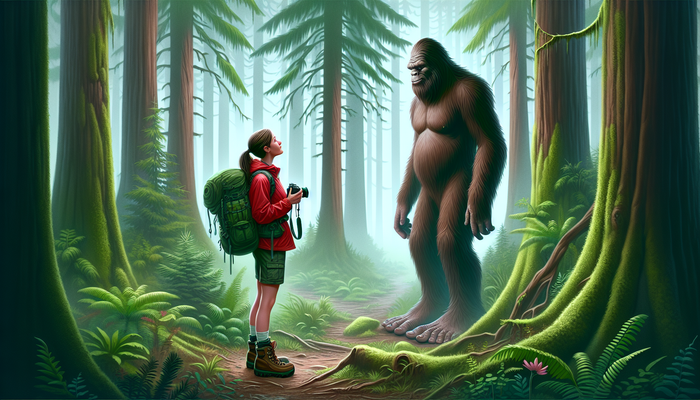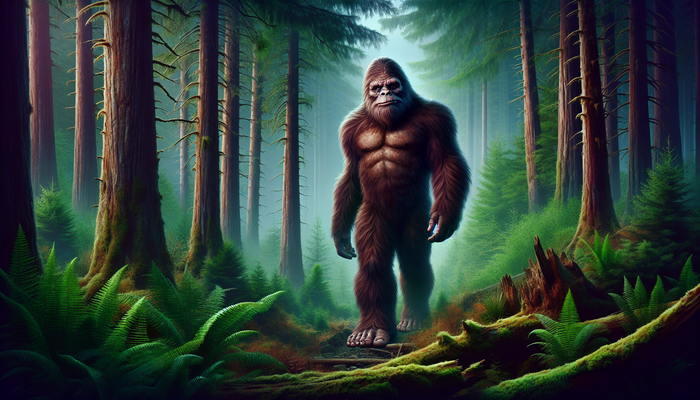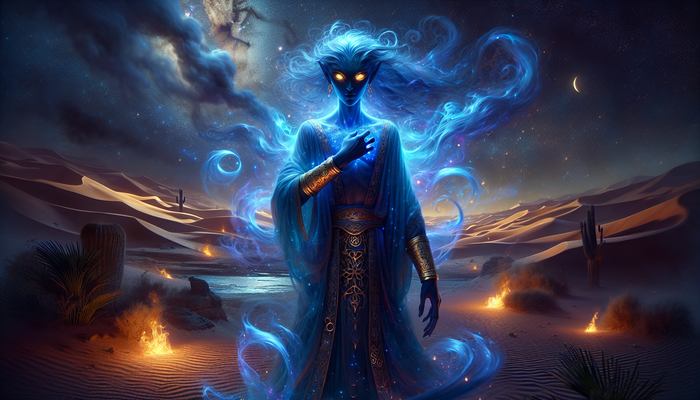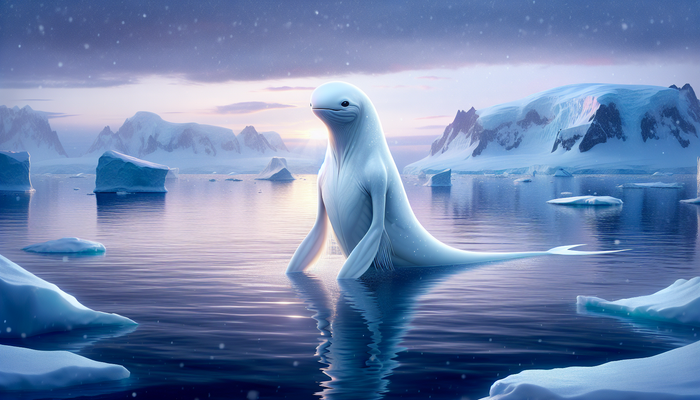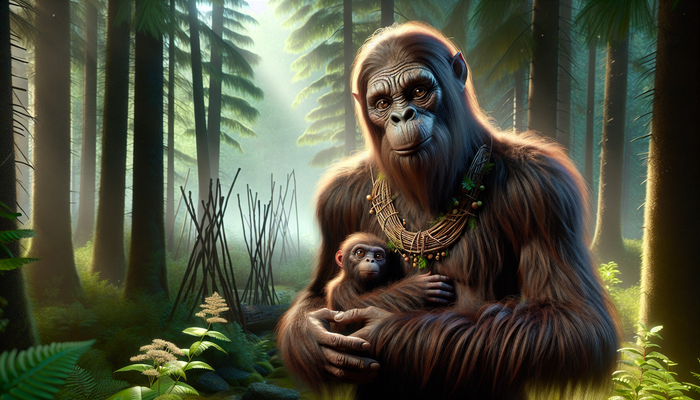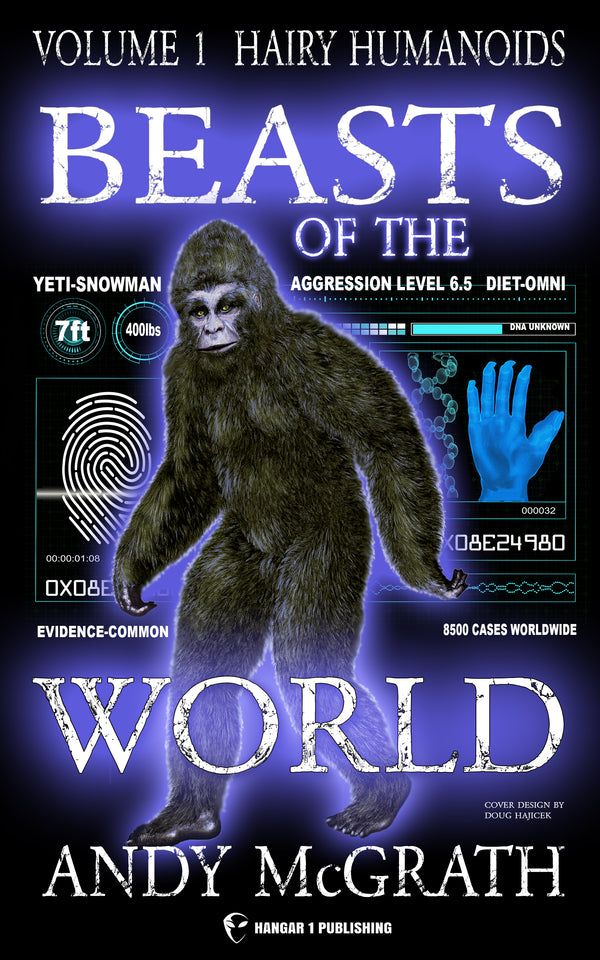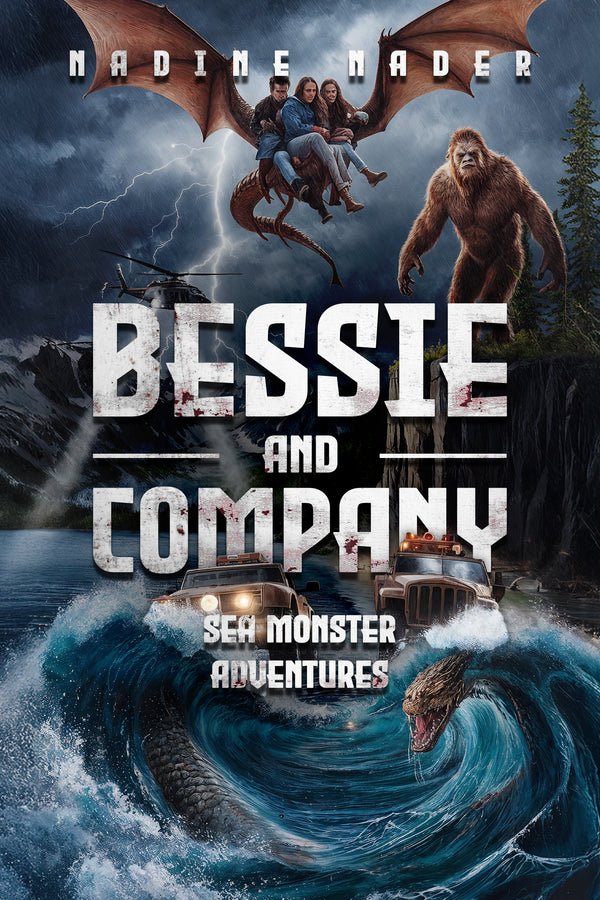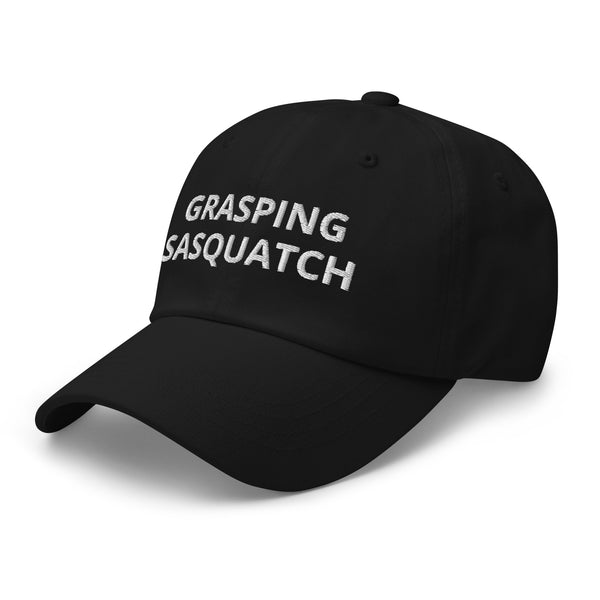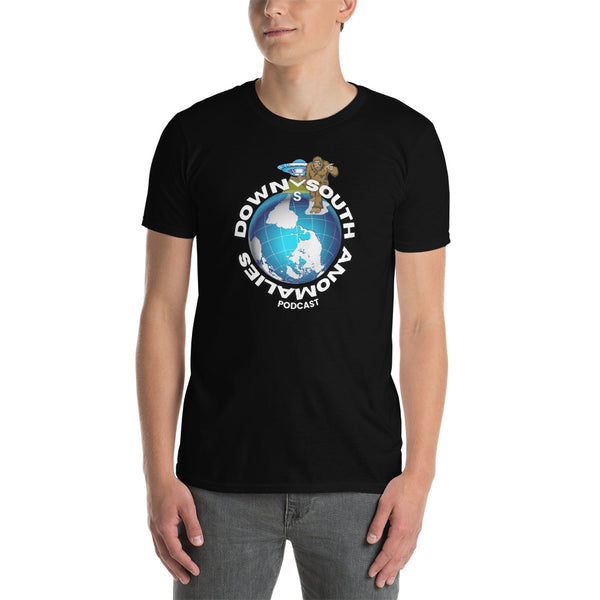Discovering the Sharlie Cryptid: Idaho's Legendary Lake Monster

By James Roberts, Cryptozoologist
The Origins of the Sharlie Legend
Long before Western settlers arrived in the area surrounding Payette Lake, the indigenous peoples of the region, including the Shoshone and Nez Perce tribes, spoke of an ominous presence in its waters. Their oral traditions told of an evil spirit that dwelled in the seemingly bottomless depths, a being that demanded respect and caution from those who ventured near the shore. These stories, passed down through generations, laid the groundwork for the modern legend of Sharlie.
The transition from indigenous lore to contemporary cryptid began in 1920 when a group of railroad workers cutting ties near the upper end of the lake had a startling encounter. What they initially mistook for a floating log suddenly began to move of its own accord, creating a wake as it swam away into deeper waters. This sighting marked the first documented encounter with what would later be known as Sharlie, igniting a spark of curiosity that would grow into a roaring flame of local legend.
The workers' account spread quickly through the community, prompting others to share their own strange experiences on the lake. Fishermen began to report unusual disturbances in the water, and boaters claimed to have seen large, unexplained shapes moving beneath the surface. These early sightings were often dismissed as tall tales or misidentifications, but they planted the seeds of a mystery that would capture the imagination of the region for decades to come.
The 1944 Sightings: A Turning Point
It wasn't until 1944 that the legend of Sharlie truly took hold of the public consciousness. In August of that year, multiple groups of witnesses reported seeing a creature in Payette Lake that defied explanation. Their descriptions were remarkably consistent: a beast 30 to 35 feet in length, with a head reminiscent of a dinosaur, pronounced jaws, and a series of humps along its back like those of a camel. Perhaps most intriguingly, witnesses described the creature's skin as having a shell-like quality, unlike anything they had seen before.
One particularly notable account came from Dr. G.A. Taylor of Nampa, Idaho. He described seeing a creature "between 30 and 40 feet long" that repeatedly dove into the water, leaving a wake "about like a small motor boat would make." Dr. Taylor's credibility as a medical professional lent weight to his testimony, making it harder for skeptics to dismiss the sightings out of hand.
These 1944 sightings catapulted the Payette Lake monster into the national spotlight. The story was picked up by media outlets across the country, including Time Magazine, which ran a feature on the creature in its August issue. Suddenly, McCall, Idaho, found itself at the center of a cryptozoological storm. Monster hunters, thrill-seekers, and curious tourists began flocking to the area, all hoping to catch a glimpse of the elusive beast.
The influx of attention had a profound impact on the local community. Hotels and restaurants saw a surge in business as visitors poured in from across the country. Local tour operators began offering "monster-spotting" excursions on the lake, and souvenir shops quickly stocked up on Payette Lake monster merchandise. The economic boost was welcome, but it also brought challenges as the small town grappled with its newfound fame.
The 1944 sightings also marked a shift in how the creature was perceived. What had once been a vague, somewhat frightening presence in local lore was now being described in more concrete terms. The detailed accounts provided by witnesses allowed people to form a clearer mental image of the beast, making it feel more real and tangible. This transformation from abstract threat to specific creature was crucial in cementing the monster's place in local culture.
The Naming Contest: From Slimy Slim to Sharlie
As sightings continued and the legend grew, locals began to feel that their resident lake monster deserved a proper name. In 1954, A. Boone McCallum, the editor of the local newspaper The Star News, decided to capitalize on the growing interest by holding a contest to name the creature. Up until this point, it had been referred to by various monikers, including the rather unflattering "Slimy Slim."
The contest captured the imagination of people far beyond the borders of Idaho. Entries poured in from across the country, with contestants vying for the honor of naming this now-famous cryptid. Some suggestions were serious, drawing inspiration from Native American languages or the creature's supposed characteristics. Others were more whimsical, reflecting the sense of fun and excitement that had come to surround the legend.
In the end, the winning entry came from Le Isle Hennefer Tury of Springfield, Virginia. Her suggestion? "Sharlie." The name was a clever reference to a popular catchphrase from Jack Pearl's radio show, where the comedian would often ask, "Vas you der, Sharlie?" This playful nod to contemporary pop culture struck just the right chord, blending humor with a touch of mystery.
The choice of "Sharlie" as the creature's official name marked a significant turning point in the legend's evolution. It transformed the monster from a nameless, potentially threatening entity into something more approachable and even endearing. The name gave the creature a personality of sorts, making it feel like a quirky local character rather than a fearsome beast.
This shift in perception had a profound impact on how the community related to its lake monster. Sharlie became a source of local pride, a shared inside joke that brought people together. The name was embraced wholeheartedly by McCall residents, appearing on signs, in local business names, and even in school mascots. It became a symbol of the town's unique identity, setting McCall apart from other mountain communities.
The naming of Sharlie also reflected a broader trend in cryptid lore. By giving the creature a friendly, almost comical name, the people of McCall were following in the footsteps of other communities with their own legendary beasts. From Nessie in Scotland to Champ in Lake Champlain, these nicknames serve to make the unknown feel more familiar and less threatening.
Continued Sightings and Cultural Impact
In the years following the naming contest, Sharlie sightings continued to be reported with surprising regularity. Between 1956 and 2002, dozens of witnesses came forward with accounts of encountering the creature in Payette Lake. These sightings varied in detail, but many shared common elements that aligned with earlier descriptions.
In 1956, Dabney Taylor reported seeing Sharlie swimming near his boat, leaving a substantial wake behind it. He described a creature with a long neck and a small head adorned with two horn-like protrusions. This account added new details to the Sharlie mythos, further fueling speculation about the creature's appearance and nature.
A particularly intriguing series of sightings occurred in 1985 when several people reported seeing Sharlie on different occasions. One witness, Tom Grote, claimed to have spotted the creature while flying over the lake in a plane. He described seeing three distinct humps breaking the surface of the water, estimating the creature's length at around 40 feet. This aerial sighting provided a new perspective on Sharlie, suggesting that the creature was large enough to be visible from a considerable height.
As reports accumulated over the decades, they began to shape a more detailed picture of Sharlie. Some witnesses described a dark, serpentine body, while others spoke of a more robust, almost prehistoric-looking creature. The variations in these accounts only added to the mystery, sparking debates about whether Sharlie was a single entity or perhaps a small population of unknown animals.
The ongoing sightings had a profound impact on local culture. Sharlie became deeply ingrained in the identity of McCall and the surrounding area. Local businesses capitalized on the legend, offering Sharlie-themed merchandise ranging from t-shirts and postcards to more unique items like custom-made Sharlie sculptures. The creature's likeness began appearing on everything from restaurant menus to real estate advertisements, becoming an unofficial mascot for the region.
One of the most beloved tributes to Sharlie is the annual ice sculpture created during McCall's Winter Carnival. Each year, skilled artists carve a massive representation of the creature from blocks of ice, drawing crowds of admirers and photographers. This tradition not only celebrates the legend but also showcases the community's artistic talent and sense of humor.
The impact of Sharlie extends beyond mere commercial exploitation. The creature has inspired local artists, writers, and musicians, becoming a muse for creative expression. Children's books featuring Sharlie adventures line the shelves of local bookstores, while area bands have penned songs about the elusive lake monster. These cultural artifacts serve to keep the legend alive, passing it down to new generations of McCall residents and visitors.
Perhaps one of the most tangible examples of Sharlie's cultural impact is the famous "Sharlie Burger" served at My Father's Place, a popular local eatery. This culinary creation, featuring a large patty and unique toppings, has become a must-try item for tourists visiting McCall. The burger's popularity demonstrates how deeply the Sharlie legend has permeated everyday life in the community, turning a cryptid into a culinary attraction.
The ongoing fascination with Sharlie has also had a positive impact on local tourism. While the initial surge of monster-hunters has long since subsided, the legend continues to draw curious visitors to Payette Lake. Many come hoping to catch a glimpse of the elusive creature, while others simply enjoy the atmosphere of mystery that surrounds the area. This sustained interest has helped support local businesses and keep McCall on the map as a destination for those interested in folklore and the unexplained.
Scientific Perspectives and Skepticism
While Sharlie has captured the hearts and imaginations of many, the scientific community has approached the legend with a healthy dose of skepticism. To date, no concrete evidence has been found to support the existence of a large, unknown creature living in Payette Lake. This lack of physical proof has led many researchers to seek alternative explanations for the numerous sightings reported over the years.
One common theory proposed by skeptics is that Sharlie sightings may be misidentifications of known aquatic species. Payette Lake is home to several large fish species, including sturgeon, which can grow to impressive sizes. A sturgeon surfacing unexpectedly or viewed from an unusual angle could potentially be mistaken for something more exotic, especially by witnesses unfamiliar with the lake's native fauna.
Another explanation often put forward is the possibility of optical illusions or natural phenomena being misinterpreted as a living creature. Payette Lake's location in a mountainous region means it is subject to unique weather patterns and water conditions. Waves, currents, or even floating debris could, under the right circumstances, create the illusion of a large, moving object in the water.
Some researchers have suggested that the power of suggestion and the human tendency to pattern recognition might play a role in Sharlie sightings. Once the idea of a lake monster became widely known, people visiting Payette Lake might be more likely to interpret ambiguous stimuli as evidence of the creature's presence. This psychological phenomenon, known as pareidolia, could explain why sightings tend to cluster around periods of increased media attention.
Despite the lack of scientific evidence, many cryptozoologists—researchers who study animals whose existence is unproven—maintain an interest in Sharlie. They argue that the consistency of sightings over many decades, combined with the lake's depth and relatively isolated location, make it at least theoretically possible for an unknown species to exist there undetected.
Some have proposed that if Sharlie does exist, it could be a relic population of a prehistoric species thought to be extinct. The plesiosaur theory, popular among cryptid enthusiasts, suggests that a small group of these marine reptiles might have somehow survived in the lake since the end of the Cretaceous period. While this idea captures the imagination, it faces significant challenges from a biological and evolutionary standpoint.
The scientific skepticism surrounding Sharlie highlights the tension between folklore and empirical evidence that often surrounds cryptid legends. While the lack of concrete proof makes it difficult for mainstream science to take the Sharlie phenomenon seriously, it does not diminish the cultural and social significance of the legend.
In many ways, the scientific uncertainty surrounding Sharlie serves to enhance rather than detract from its appeal. The possibility, however remote, that an unknown creature could be lurking in the depths of Payette Lake adds an element of mystery and excitement to the natural world. It reminds us that despite our advanced technology and scientific understanding, there are still aspects of our planet that remain unexplored and unexplained.
The Mystery of Sharlie: What Lies Beneath?
Payette Lake itself plays a crucial role in the enduring mystery of Sharlie. Formed by glacial activity during the last ice age, the lake is a deep, cold body of water with unique characteristics that fuel speculation about what might live in its depths. At its deepest point, Payette Lake plunges to 392 feet, providing ample space for a large creature to remain hidden from casual observation.
The lake's geology adds another layer of intrigue to the Sharlie legend. Some researchers have suggested that underwater caves or tunnels could provide hidden habitats for unknown species. While no such features have been definitively identified, the possibility of unexplored underwater structures continues to captivate the imagination of Sharlie enthusiasts.
Modern technology has both helped and hindered the search for Sharlie. Sonar equipment, underwater cameras, and even drones have been employed in attempts to capture evidence of the creature. While these tools have provided detailed maps of the lake bottom and improved our understanding of its ecosystem, they have yet to produce any conclusive proof of Sharlie's existence.
The advent of smartphones and social media has changed the landscape of cryptid sightings. Now, anyone with a phone can potentially capture and share images or video of unusual phenomena on the lake. This democratization of monster-hunting has led to an increase in reported sightings, but it has also raised questions about the reliability of such evidence in an age of easy digital manipulation.
Despite the challenges of proving Sharlie's existence, interest in the creature remains high. Amateur researchers and cryptid enthusiasts continue to visit Payette Lake, armed with cameras and a sense of adventure. Some employ cutting-edge technology, such as underwater drones or thermal imaging cameras, in their quest to document the elusive beast.
The ongoing fascination with Sharlie speaks to a deeper human need for mystery and wonder in the natural world. In an age where satellite imagery can show us every corner of the globe and DNA sequencing can map the building blocks of life, the idea that a large, unknown creature could be living in a lake in Idaho is deeply appealing. It suggests that there are still frontiers to be explored, mysteries to be solved, and discoveries to be made.
For many, the search for Sharlie is about more than just finding a monster. It's an opportunity to connect with nature, to experience the thrill of the unknown, and to be part of a community united by a shared sense of wonder. Whether viewed as a literal creature or a metaphor for the mysteries that still exist in our world, Sharlie continues to inspire and intrigue.
Other Idaho Cryptids and Their Stories
While Sharlie may be Idaho's most famous cryptid, it is far from the only mysterious creature said to inhabit the Gem State. Idaho's diverse landscape of mountains, forests, and waterways provides the perfect backdrop for a variety of cryptid legends, each with its own unique characteristics and cultural significance.
The Bear Lake Monster
The Bear Lake Monster, said to inhabit the waters of Bear Lake on the Idaho-Utah border, shares many similarities with Sharlie. First reported in the 1860s, the Bear Lake Monster is described as a large, serpentine creature with a head like a cow or a walrus. Native American tribes in the area had long told stories of a dangerous water beast, which may have influenced later settler accounts. The legend of the Bear Lake Monster became so prominent that it was featured in national newspapers and even attracted the attention of Brigham Young, the Mormon leader.
Unlike Sharlie, the Bear Lake Monster has a reputation for aggression, with early stories claiming it would snatch unwary swimmers or attack boats. This fearsome reputation has softened over time, and today the Bear Lake Monster is celebrated as a local mascot, much like Sharlie in McCall. The similarities between these two lake monster legends highlight how different communities can develop parallel cryptid traditions, each shaped by local culture and geography.
The Paddler of Lake Pend Oreille
Another notable Idaho cryptid is the Paddler of Lake Pend Oreille. This mysterious creature is said to inhabit the deep waters of Idaho's largest lake, located in the northern part of the state. Sightings of the Paddler date back to the 1940s and describe a large, dark creature capable of creating significant wakes in the water. Some researchers have drawn connections between the Paddler and Native American legends of water spirits, suggesting a long history of mysterious encounters on the lake.
The legend of the Paddler gained particular prominence in the 1980s when a series of well-publicized sightings sparked renewed interest in the creature. Unlike Sharlie, which has become a beloved local icon, the Paddler remains a more enigmatic figure, with fewer cultural touchstones built around its legend. Nevertheless, it continues to intrigue locals and visitors alike, adding an air of mystery to one of Idaho's most beautiful natural areas.
The Nimerigar
Moving away from aquatic cryptids, Idaho is also home to legends of mysterious humanoid creatures. The Nimerigar, or "little people," are said to inhabit the mountainous regions of Idaho and neighboring states. According to folklore, particularly among the Shoshone and Bannock tribes, the Nimerigar were a race of aggressive dwarves armed with poisoned arrows. While not unique to Idaho, the Nimerigar legends add an intriguing dimension to the state's cryptid lore, suggesting that mysterious beings might lurk not just in its waters but also in its forests and mountains.
These varied cryptid legends reflect the diverse landscapes and cultural influences that have shaped Idaho's folklore. From the depths of its lakes to the heights of its mountains, the state seems to harbor a wealth of mysterious creatures, each adapted to its particular environment. The persistence of these legends speaks to the enduring human fascination with the unknown and the way in which local communities shape and are shaped by their folklore traditions.
The study of Idaho's cryptids offers insights not just into the creatures themselves but into the communities that have kept these legends alive. Each story reflects local history, indigenous traditions, and the particular characteristics of the Idaho landscape. Whether seen as literal beings or as metaphors for the wild and untamed aspects of nature, these cryptids play an important role in Idaho's cultural identity.
As with Sharlie, many of Idaho's other cryptids have become sources of local pride and tourist attractions. Festivals, merchandise, and local businesses often incorporate these legendary creatures into their branding, turning folklore into a tangible economic and cultural asset. This commercialization, while sometimes criticized, also serves to keep the legends alive and relevant in the modern world.
The variety of cryptids said to inhabit Idaho also highlights the state's position at the crossroads of different cultural and geographical regions. Influences from Native American traditions, Mormon settlers, and the broader American West all converge in Idaho's cryptid lore, creating a rich tapestry of legends that reflect the state's diverse heritage.
For cryptozoologists and folklore enthusiasts, Idaho represents a treasure trove of mysterious creatures waiting to be studied. The state's vast wilderness areas and relatively low population density mean that there are still many areas where an unknown animal could potentially remain hidden from human observation. This combination of rich folklore and unexplored wilderness continues to draw researchers and enthusiasts from around the world, all hoping to uncover evidence of Idaho's elusive cryptids.
In the end, whether one believes in the literal existence of these creatures or views them as colorful local legends, Idaho's cryptids play an important role in the state's cultural landscape. They provide a link to the past, a source of community identity, and a reminder of the mystery and wonder that can still be found in the natural world. From Sharlie to the Nimerigar, these legends continue to capture the imagination, inviting us to look at the world around us with fresh eyes and an open mind.
The story of Sharlie and Idaho's other cryptids is far from over. As long as there are unexplored depths in Payette Lake and uncharted wilderness in the Idaho mountains, there will be those who believe in the possibility of unknown creatures lurking just out of sight. These legends serve as a reminder that even in our modern, interconnected world, there is still room for mystery, wonder, and the thrill of the unknown.
For those intrigued by the legend of Sharlie and Idaho's other cryptids, the invitation to explore is always open. Whether it's taking a boat out on Payette Lake in hopes of spotting a telltale wake, hiking the mountain trails where the Nimerigar are said to roam, or simply sitting by a campfire sharing stories of mysterious encounters, Idaho offers countless opportunities to connect with its rich folklore tradition.
As we continue to push the boundaries of scientific knowledge and explore the furthest reaches of our planet, legends like Sharlie remind us of the importance of maintaining a sense of wonder about the world around us. They challenge us to keep an open mind, to question what we think we know, and to remember that there may still be marvels waiting to be discovered in the most unexpected places.
In the end, whether Sharlie and Idaho's other cryptids exist in physical form or solely in the realm of imagination, their impact on the culture, economy, and identity of the state is undeniable. They are a testament to the power of storytelling, the enduring allure of the unknown, and the unique ability of legends to bring communities together. As long as there are lakes to be explored and forests to be wandered, the cryptids of Idaho will continue to capture our imagination and invite us to look beyond the surface, always wondering what mysteries might be lurking just out of sight.
From Bigfoot to UFOs: Hangar 1 Publishing Has You Covered!
Explore Untold Stories: Venture into the world of UFOs, cryptids, Bigfoot, and beyond. Every story is a journey into the extraordinary.
Immersive Book Technology: Experience real videos, sights, and sounds within our books. Its not just reading; its an adventure.


